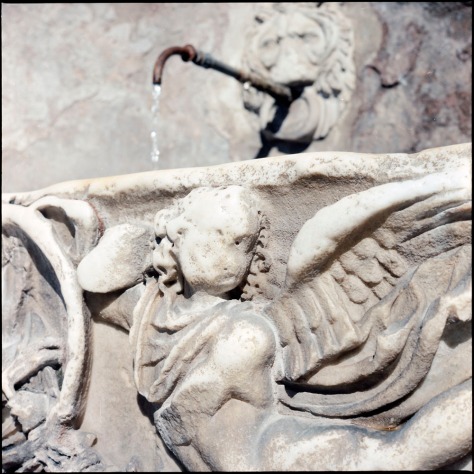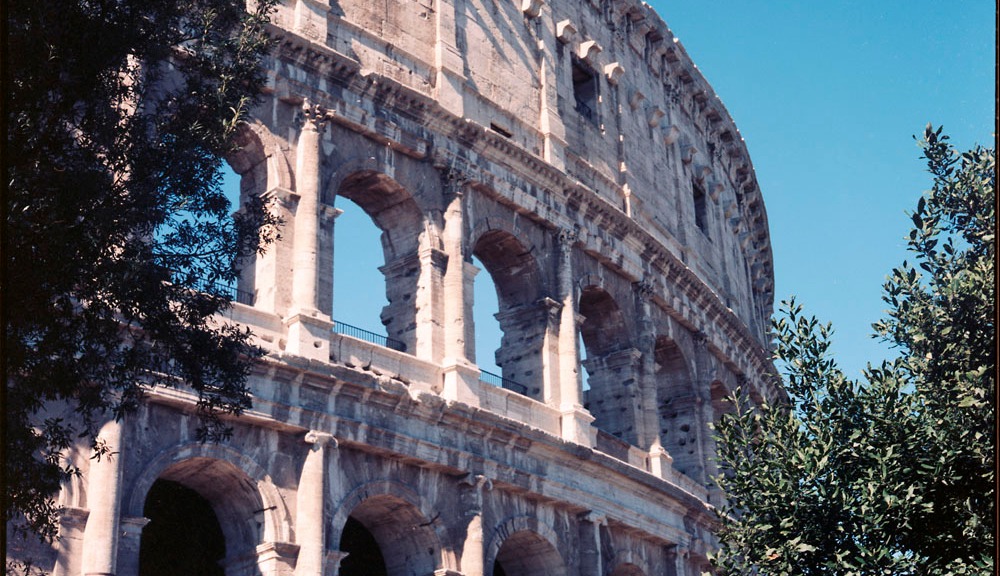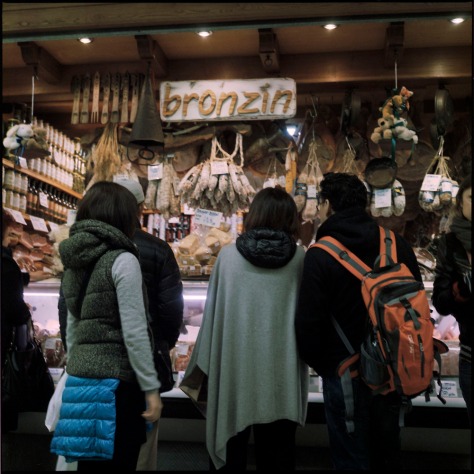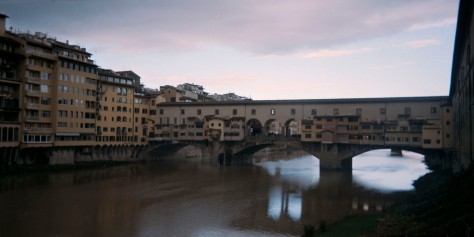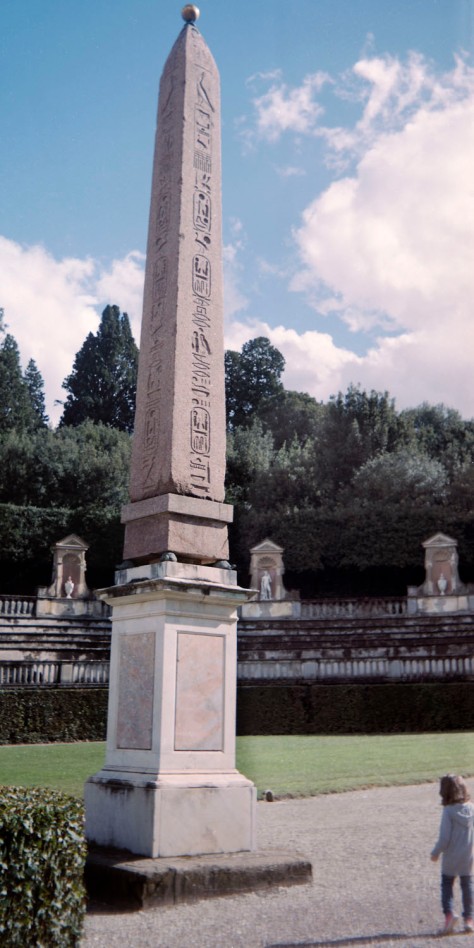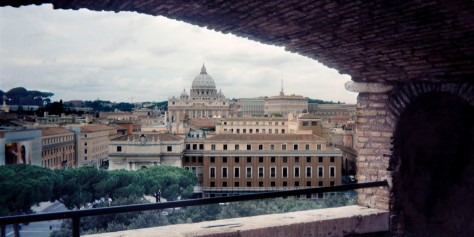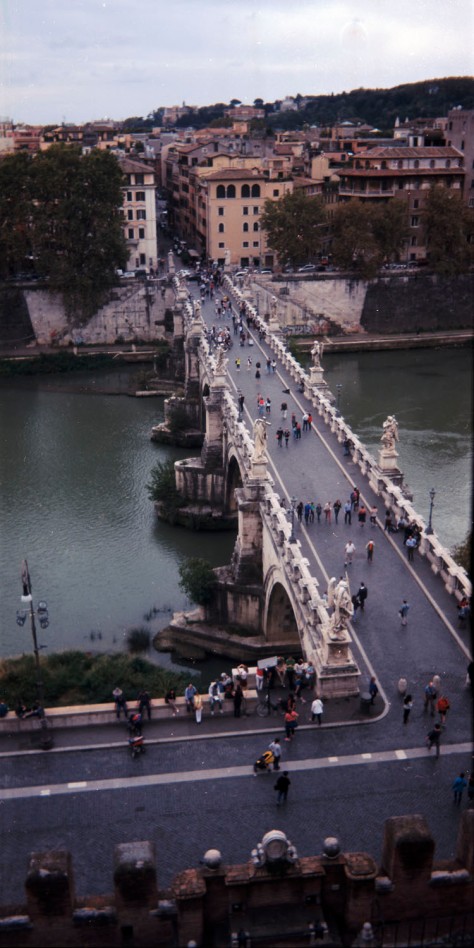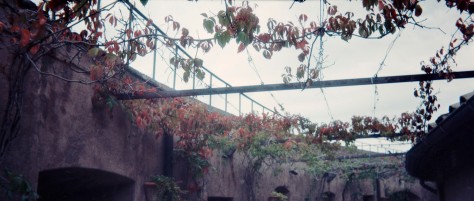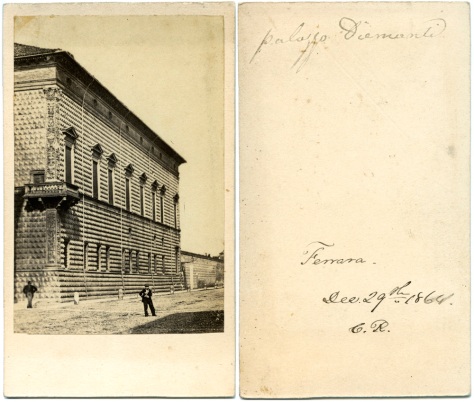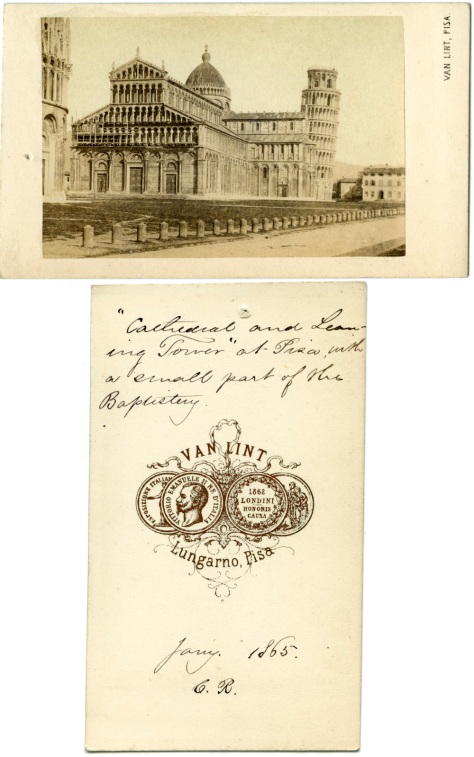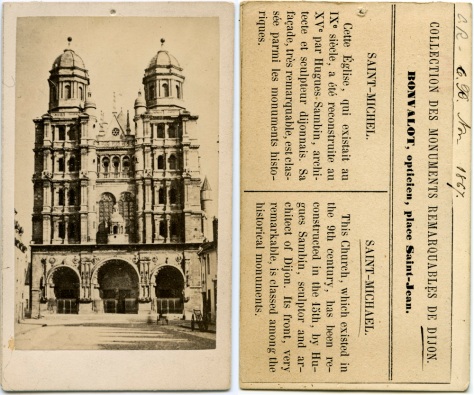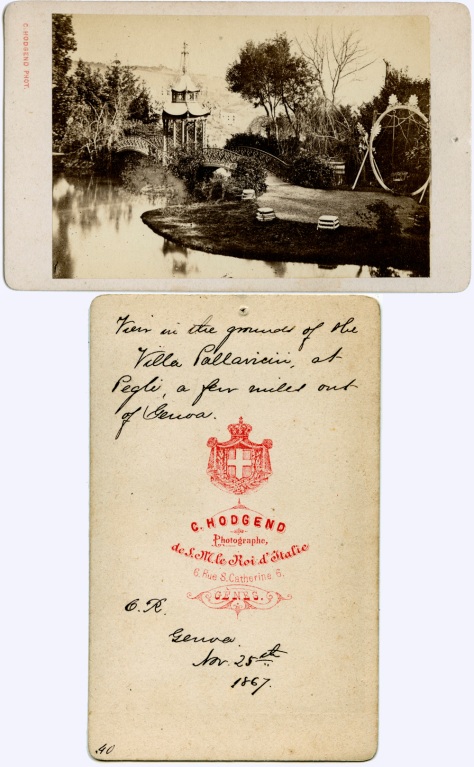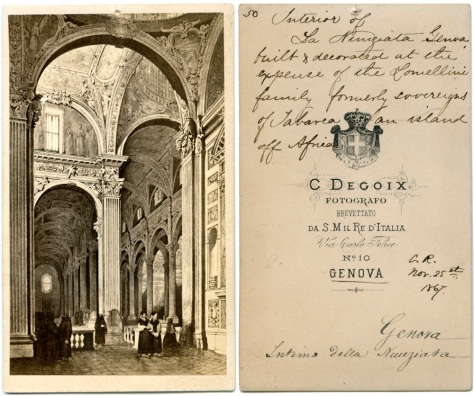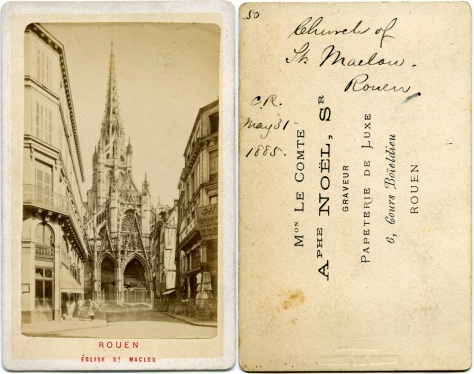The Colosseum is truly one of the marvels of ancient Rome. A building that could seat somewhere between 50,000 and 80,000 (the higher number comes from an ancient source – modern estimates are lower) but evacuate them all in just minutes, hosted mock sea battles, and was designed and constructed without the use of decimals or precision measurement systems.
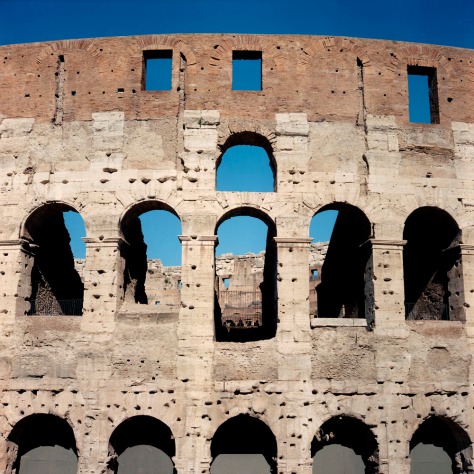
There is an ongoing project to restore and stabilize the outer wall of the Colosseum. To that end, they’ve wrapped parts of the exterior in scaffolding to assist in the work.
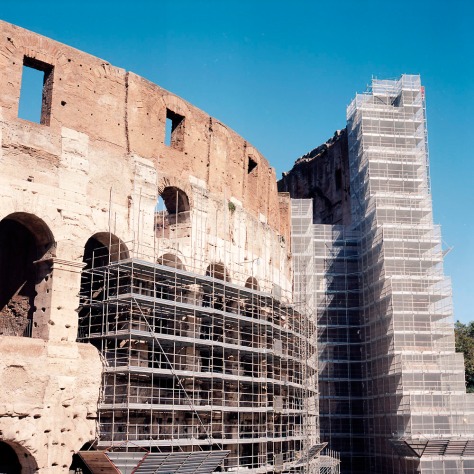
Viewed from a different angle, the scaffold takes on the appearance of a modern skyscraper.
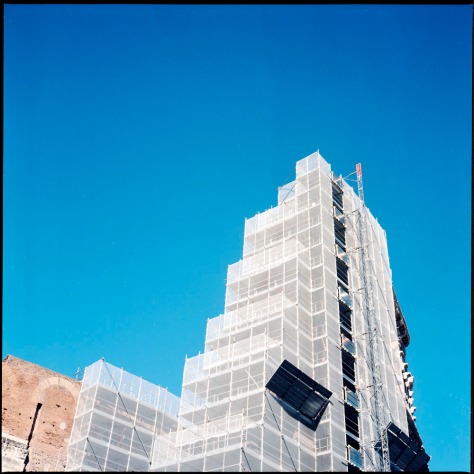
I spotted this bit of graffiti on a wall outside the entrance to the Colosseo Metro station.

A simple shot of the Colosseum exterior wall in a section not undergoing stabilization work.

You’ll notice I have no shots of the interior of the Colosseum. I did not make it inside. Traveler’s tip – if you want to see it without booking a tour, you need to buy a timed entry ticket, which you can get from the ticket booth at the entrance to the Forum. Get the ticket from the Forum (it lets you in to both the Forum and the Colosseum) instead of trying to get it directly from the Colosseum. Why? Because the line to get in, EVEN if you have the RomaPass card, is about 2-3 hours long.
There will be lots of touts outside the Colosseum offering tours that will let you skip the line to get inside. Most of these will have the sole value of letting you skip the line – the guides are of varying and often poor quality. You’re better off pre-booking your tour in advance through an agency with online reviews that you can tell how good a program they offer. The advantage of a pre-booked tour is that the tour guides will be able to take you in to parts of the Colosseum you can’t enter if you just go in yourself.
You’ll find public drinking fountains all over Rome. It’s one of the charming features of the city. Unlike fountains in some cities, they run continuously. You can fill a cup or a kettle from the spigot, or if you just want a sip, you can put your finger under the water spout to block it and water will squirt up from a small hole in the top of the pipe so you don’t have to hang upside down to get your water fix.
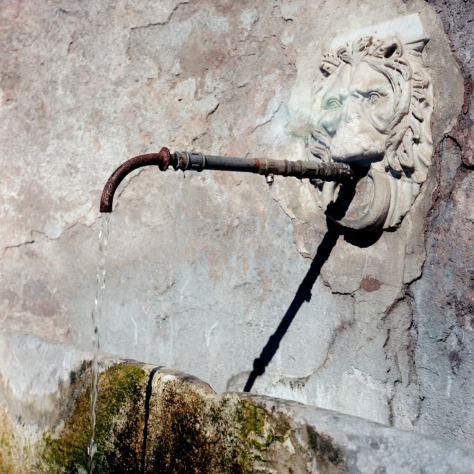
That’s a try-at-your-own-risk activity though – if the water pressure on the spout you’re blocking is good, it comes out the little hole with quite some velocity – I tried it on this fountain and got a thorough squirting in the face. Given the heat of the day it was a welcome squirt, but not expected.
I don’t know how old the trough under the spigot is, but it appears to be of the late Imperial era. It may have always been a water trough, or it may have been a sarcophagus – it’s the right size for it. But probably only in Rome will you be able to drink your water in a 1700 year old water fountain.
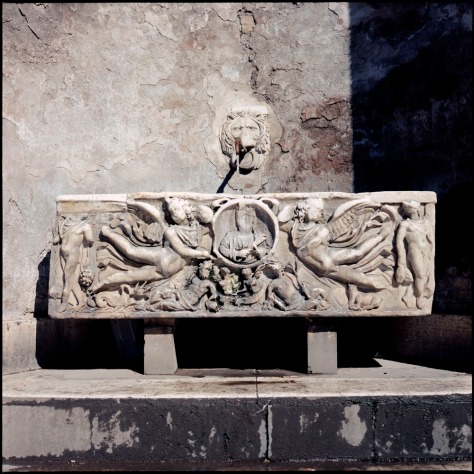
A detail of the carvings on the fountain.
